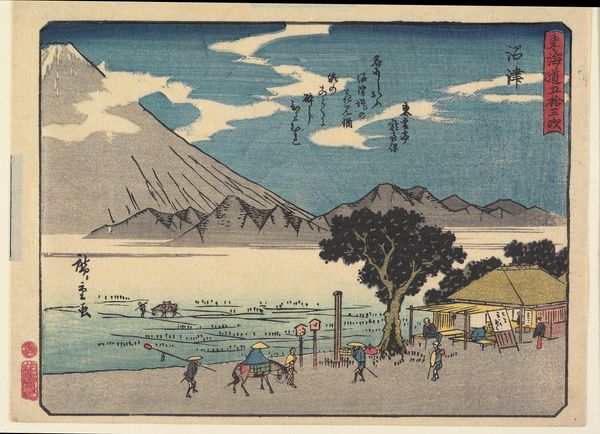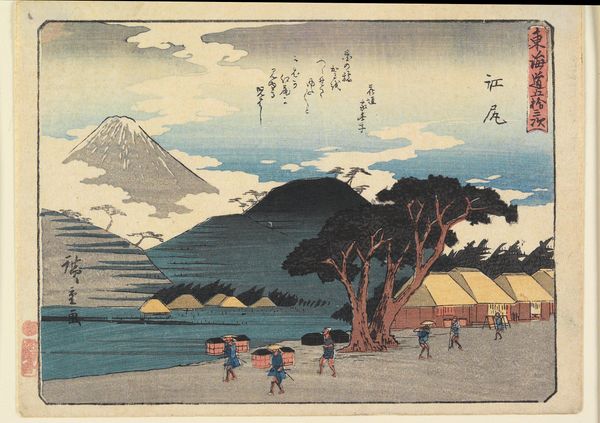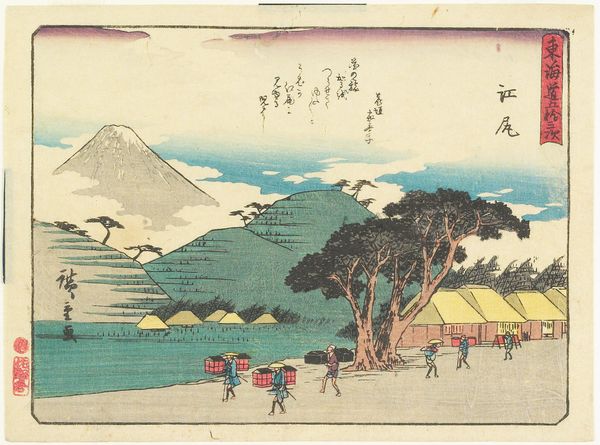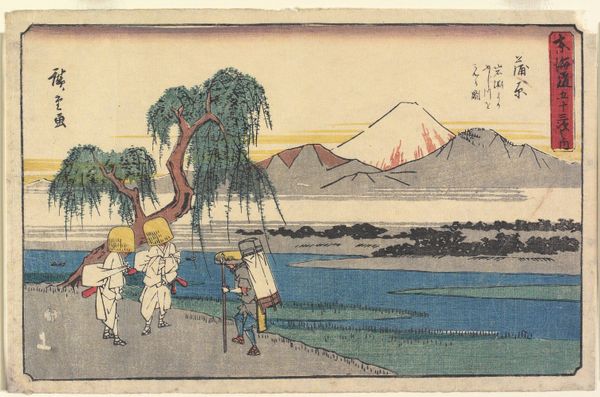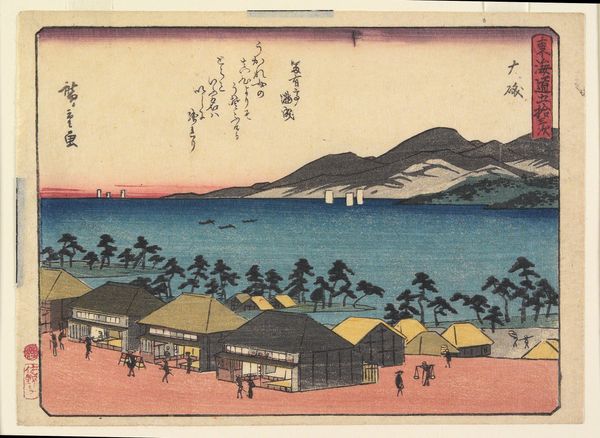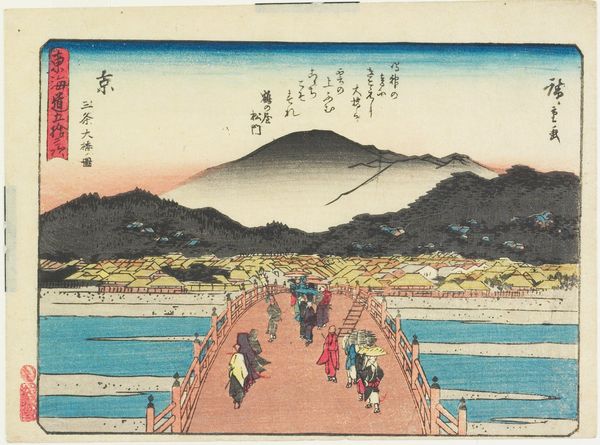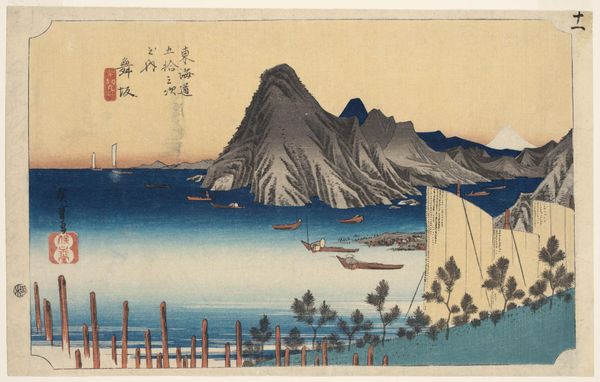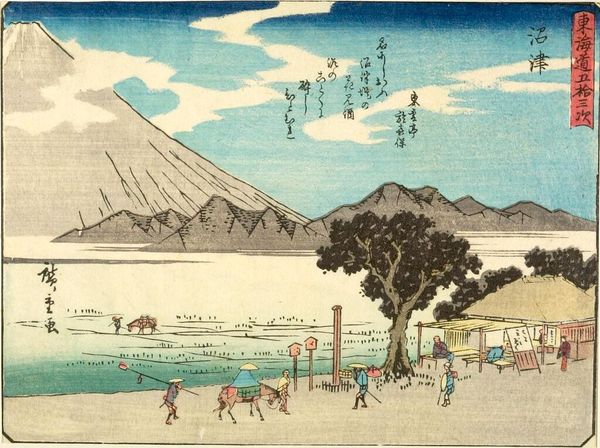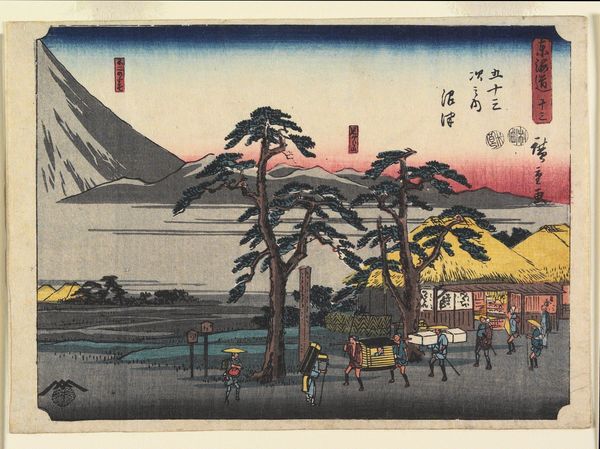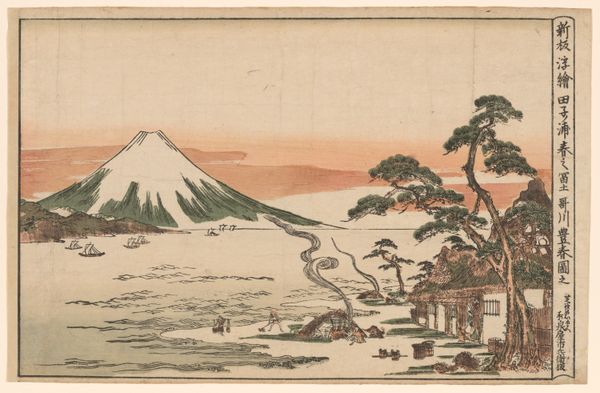
Dimensions: 6 1/8 × 8 1/4 in. (15.6 × 21 cm) (image, horizontal chūban)
Copyright: Public Domain
Curator: Just lovely, this little world he's crafted. Almost dreamlike. Editor: You’re referring to Utagawa Hiroshige’s woodblock print, “Numazu,” dating back to around 1840-1842. Part of his series depicting the Fifty-three Stations of the Tōkaidō road. What strikes you about it so vividly? Curator: Well, look at that diffused light, it feels more like memory than observation, don’t you think? And the scale – the miniature figures trudging alongside what I presume is a grand vista. Makes them all the more endearing, doesn't it? The whole piece sings a melancholic tune, doesn't it? A tiny speck of life against an infinite backdrop. Editor: Interesting. While that melancholic feel might stem from the ukiyo-e tradition – focusing on the fleeting pleasures of life – I see it more as Hiroshige documenting the socio-economic realities of the time. This Tōkaidō road was crucial for trade and travel, and this image freezes that moment, but also invites one to meditate on this landscape through different social perspectives. Curator: Ah, but is it truly a landscape if it’s imbued with such intimate emotion? Look at how deliberately that large solitary tree is placed. For me it sets a contemplative tone! He has captured so much poetry with just ink and pigment. Editor: Maybe, but remember these prints weren’t considered “high art” at the time. They were mass-produced, affordable travel souvenirs. Hiroshige was an astute observer, documenting a changing Japan for a growing public, as much as, perhaps, filtering through something personal. What do you feel about how Japan looks back at that vision today? Curator: That’s a bittersweet thought. I can imagine him observing us as if looking from across the world, knowing we appreciate that particular melancholic tune differently now, being more fragile, with the same ephemeral, tender heart that can be felt right from this woodblock-print work. Editor: Indeed. And in its own quiet way, that image shaped our gaze as much as our gaze shapes it. Curator: I love the thought of a woodblock print continuing to leave its mark. Editor: As do I. Thanks for sharing that, it provides an even richer perspective, considering the historic landscape with a deep understanding.
Comments
No comments
Be the first to comment and join the conversation on the ultimate creative platform.
